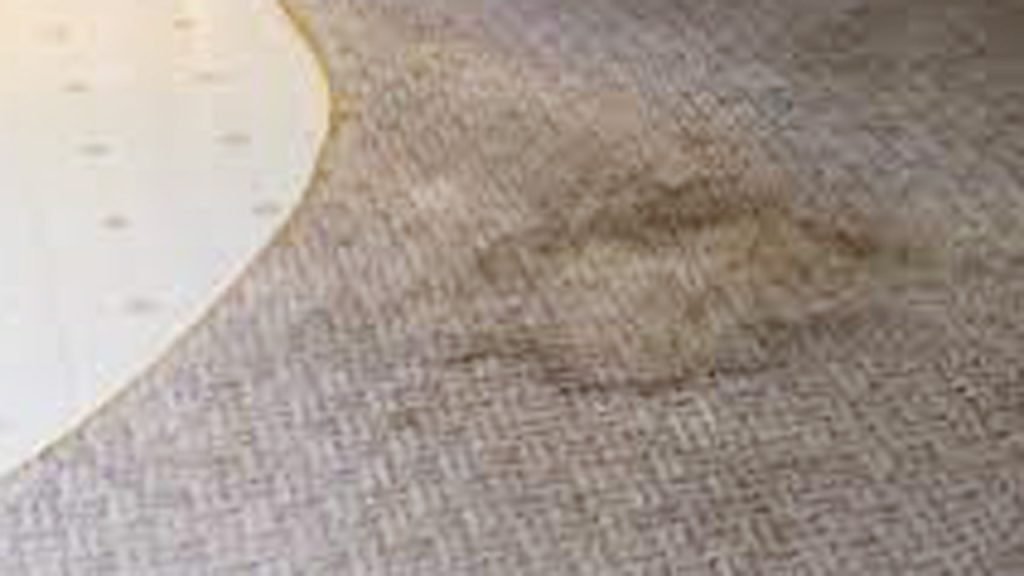Mold in carpets is a common problem that can result from excess moisture, leaks, or high humidity. It not only damages the carpet but can also pose health risks to individuals with allergies or respiratory issues.
Vinegar is a natural and effective solution for removing mold from carpets. In this article, we will guide you through the process of cleaning mold from carpets using vinegar, discussing the necessary preparations, steps involved, and tips for prevention.

Image by mold-advisor
Mold and Its Risks
Mold is a type of fungus that thrives in damp environments. It reproduces through spores that can easily become airborne and settle on various surfaces, including carpets. While mold can be found indoors and outdoors, it becomes a concern when it grows indoors, especially in areas with poor ventilation or high moisture levels.
Health Risks of Mold Exposure
Exposure to mold can lead to various health issues, particularly for individuals with compromised immune systems or pre-existing respiratory conditions. Common health effects include:
- Allergic reactions such as sneezing, coughing, and skin irritation
- Respiratory issues, including asthma attacks
- Sinus congestion
- Headaches and fatigue
Given these risks, it’s essential to address mold growth in carpets promptly.
There’s more to explore! Here’s another valuable read: Does Steam Cleaning Kill Mold in Carpet? Ultimate Mold Removal Guide
Why Use Vinegar for Cleaning Mold?
Vinegar is a natural, non-toxic cleaning agent that has antifungal and antibacterial properties. Its acidity helps break down mold, making it easier to remove from carpets. Additionally, vinegar is readily available and affordable, making it an excellent choice for those looking to clean mold without harsh chemicals.
Materials Needed
Before you begin cleaning mold from your carpet with vinegar, gather the following materials:
- White distilled vinegar
- Spray bottle
- Clean cloths or rags
- Soft-bristle brush
- Baking soda (optional)
- Vacuum cleaner
- Water
Don’t miss out on related tips: Read this next: Why Is My Carpet Still Dirty After Professional Cleaning? Solutions You Need
Preparing the Area
Proper preparation is crucial to ensure an effective cleaning process. Follow these steps to prepare the area for cleaning:
Assess the Mold Growth
Inspect the carpet for mold growth. Determine the extent of the infestation. If the mold covers a large area (more than 10 square feet), it may be best to consult a professional for remediation.
Remove Furniture
Clear the area of any furniture or objects that may obstruct your cleaning efforts. This allows for easier access to the affected carpet and helps prevent further contamination.
Ensure Proper Ventilation
Open windows and doors to create airflow in the room. Good ventilation helps dissipate mold spores and the strong odor of vinegar during the cleaning process.
Steps to Clean Mold from Carpet with Vinegar
Follow these detailed steps to effectively clean mold from your carpet using vinegar:
Prepare the Vinegar Solution
Fill a spray bottle with equal parts of white distilled vinegar and water. For example, you can mix 1 cup of vinegar with 1 cup of water. If desired, you can add a teaspoon of baking soda to enhance the cleaning power of the solution. Shake the bottle to mix the ingredients well.
Test a Small Area
Before applying the solution to the entire moldy area, test it on a small, inconspicuous spot on the carpet. This step ensures that the vinegar does not cause discoloration or damage to the carpet fibers.
Apply the Vinegar Solution
Spray the vinegar solution generously onto the moldy area of the carpet. Ensure the affected area is thoroughly saturated but not excessively wet, as too much moisture can exacerbate mold growth. Allow the solution to sit for about 10-15 minutes to penetrate the mold.
Scrub the Area
Using a soft-bristle brush or cloth, gently scrub the moldy area to loosen the mold from the carpet fibers. Be careful not to damage the carpet during this process. You should see the mold starting to lift as you scrub.
Blot the Area
After scrubbing, use a clean cloth or rag to blot the area and absorb excess moisture and mold. Press down firmly to soak up as much liquid as possible. You may need to repeat this step with multiple cloths until no more moisture is visible.
Rinse the Area
Dampen another cloth with plain water and blot the area to rinse away any remaining vinegar solution. This step helps remove any residual vinegar smell and prevents any potential residue from remaining in the carpet.
Dry the Area
Allow the carpet to air dry completely. If possible, place a fan near the area to speed up the drying process. Ensure the room remains well-ventilated during this time to discourage new mold growth.
Vacuum the Carpet
Once the carpet is dry, vacuum the area thoroughly to remove any remaining mold spores and dirt. This step also helps restore the carpet’s texture.
Additional Tips for Mold Prevention
Cleaning mold from carpets is essential, but prevention is key to avoiding future mold growth. Consider the following tips:
Control Humidity Levels
Keep indoor humidity levels below 50% to discourage mold growth. Use a dehumidifier in damp areas, such as basements, to help control moisture levels.
Improve Ventilation
Ensure that areas prone to moisture, such as bathrooms and kitchens, are well-ventilated. Use exhaust fans to remove humidity during showers and cooking.
Address Water Leaks
Promptly repair any leaks in plumbing or roofs to prevent moisture buildup, which can lead to mold growth.
Use Carpet Padding
Choose moisture-resistant carpet padding to help prevent mold growth in the future. This padding can help keep the carpet dry in case of spills or leaks.
Regular Cleaning
Regularly clean carpets to remove dirt and allergens that may promote mold growth. Consider using a professional carpet cleaning service periodically.
Vinegar vs Other Mold Removal Methods
| Method | Effectiveness | Cost | Toxicity | Ease of Use |
|---|---|---|---|---|
| Vinegar | Moderate | Low | Non-toxic | Easy |
| Bleach | High | Moderate | Toxic | Moderate |
| Commercial Mold Remover | High | Varies | Varies | Easy to Moderate |
| Hydrogen Peroxide | Moderate to High | Low to Moderate | Non-toxic | Easy |
Conclusion
Cleaning mold from carpets with vinegar is an effective, safe, and environmentally friendly method. By following the steps outlined in this guide, you can effectively remove mold and minimize health risks associated with mold exposure. Adopting preventive measures can help you maintain a mold-free environment in your home.
While vinegar is a powerful cleaning agent, addressing the root causes of moisture is essential for long-term mold prevention. Regular maintenance and vigilance will ensure your carpets remain clean and healthy.

I’m Allen Kim, the chief editor of plumbinginto. I am a mid level plumber and assign to an local firm over 4 years of experience. During the working period, most of my experience is related to the house plumbing. I learned about the thing, when working with most experienced people in this sector, one must be as good as the inspector or better with knowledge of the project as well as the practical aspects of plumbing industry.